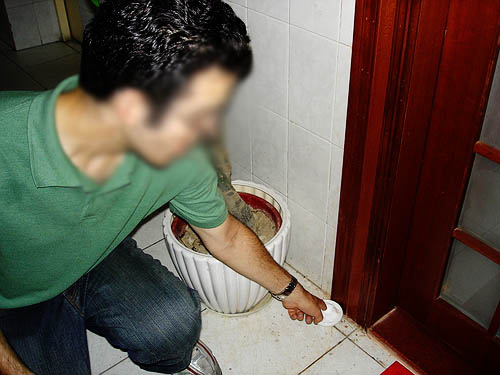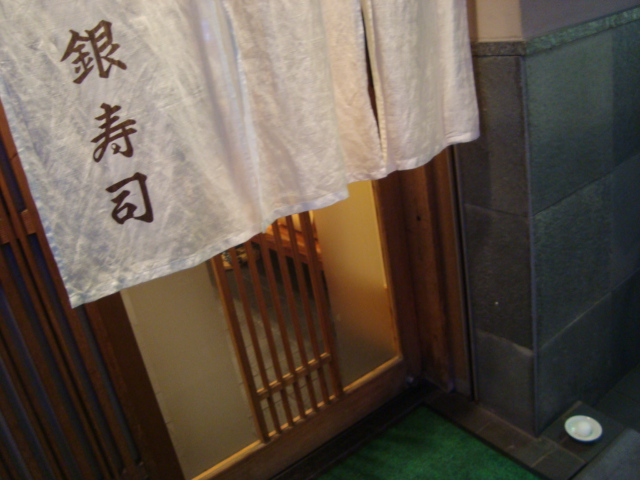Years ago, before I set off to work in Shenzhen, China, I happened upon a satirical video about the traditions of eating in a Japanese restaurant. What can one do, besides wax famished about those daily searches for good eats?
More importantly, what does Shenzhen have to do with this?…
Once settled in there, in order to spice up my daily Chinese meals, I went looking for Japanese food. After stumbling upon a vertical “Japantown” in the district of Luo Hu, the old commercial center of Shenzhen, I started to explore different floors of the building. Seedy stuff – with discounts for Japanese businessmen – was located on the top floors, whereas just below those floors were restaurants.
Hungry, I alighted to find something that had been making me chuckle since watching the sushi video above:

Just what is my needlessly blurred out self pointing to?
Salt. Right outside of a Japanese restaurant.
The mound of salt is known in Japanese as 盛塩 (morishio). Why was it there? I asked the manager, and she didn’t know. Though, one theory says that it was placed out front by the door sill in the event that your meal wasn’t salty enough. Other possibilities include a nobleman being present in the restaurant, or that when you pass through the door you’ll be purified. Another two mention that salt is placed there for good luck for the owner, or to keep evil spirits away from one’s abode (the last link is in Japanese).
Imagine at your own discretion, but please, the next time you reach for a bit of salt, think of your kidneys.

Have you noticed this when you’ve gone out for Japanese food? If so, have you taken advantage of it?

Leave a Reply